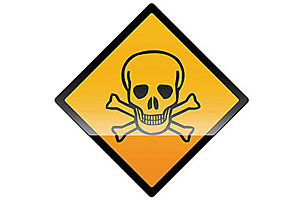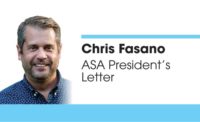
|
The first event on the Globally Harmonized System timeline is here.
Dec. 1, 2013 is the deadline to complete employee training, which includes GHS as part of the site Hazard Communication Standard program. HCS commonly is referred to as HazCom or HazCom 2012. The HCS is OHSA Standard 29 CFR 1910.1200.
On March 26, 2012, OSHA published a revised HCS, “harmonizing” it with portions of the GHS. The revised HCS changes the original HazCom from a performance-based standard to one that has a more structured requirement for the classification of chemical hazards and the labeling of chemical containers. OSHA will be using a tiered rollout of the GHS through June 1, 2016. The HazCom standard historically has been in the Top 5 most-cited OSHA standards based on OSHA inspections and in the Top 10 of the highest-issued fines by OSHA.
The HCS training is required of all affected employees. OHSA’s definition of an affected employee is:
“Anyone that ‘uses’ hazardous chemicals or can be exposed to hazardous chemicals or items. ‘Use’ means to package, handle, react or transfer. This is an intentionally broad scope and includes any situation where a chemical is present in such a way that employees may be exposed under normal conditions of use or in a foreseeable emergency.”
This is not limited to chemicals in the standard sense, but extends to products that can have possible releases from handling or working with the product. In some states, this also is interpreted to include any item an employee handles which might be a potential hazard or carcinogen.”
The required training can take two approaches. The first would be full HazCom training which includes the current HCS requirements along with the new GHS requirements. The second approach applies if you already have completed HCS training and require only supplementary training covering the GHS requirements. There are three major areas of change: hazard classifications, labels and safety data sheets. The minimum required GHS training must include:
- Training on label elements (product identifier, signal words, pictograms, hazard statements, precautionary statements and name, address and phone number of the chemical manufacturer, distributor or importer).
- Training on the format of the SDS, which includes the standardized 16-section format and the type of information found in the various sections. Sections 1 through 11 are regulated by OSHA and sections 12 through 16 by the EPA and other appropriate agencies such as DOT.
- How the label is related to the SDS.
The dual training will be required until the 2016 requirement data or until all your products and chemicals have been converted to SDS sheets and the GHS standard. OSHA has excellent resource pages listed below for the GHS and HazCom standards. The HazCom page has training materials such as OSHA FactSheets on training requirements, printable QuickCards on labels, pictograms and safety data sheets as well as other training aids. Also check the ASA Safety page for other resources on GHS and HazCom.
For more information on GHS, visit www.osha.gov/dsg/hazcome/ghs.html. For more on HazCom, visit
www.osha.gov/dsg/hazcom.
Ricky Bryant is environmental generalist for NIBCO and chairman of the American Supply Association’s Safety Committee. Eye on Safety is produced each month by ASA’s Safety Committee. For more information, visit www.asa.net/safety.


